Isabella of Castile. Childhood and youth of the famous Catholic Queen
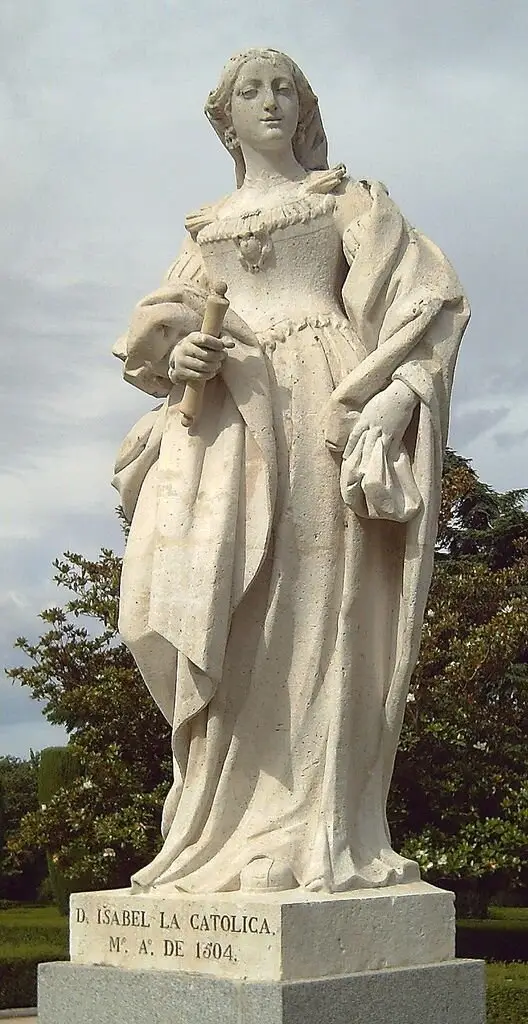
The heroine of today's article, Queen Isabella the Catholic, is, without a doubt, one of the most prominent women. She had a huge influence on history not only of the country later called Spain, but of the whole world - after all, it was this queen who financed the famous expeditions of Christopher Columbus. The centuries-long process of the Reconquista, begun by the Asturians back in 722, was completed, and the last Arab state in Europe, the Moorish emirate of Granada, fell under the pressure of Christians. By the end of her life, Isabella was queen not only of Castile and Leon, but also of Aragon, Sicily, Valencia and Naples - although still under the rights of a personal union. The first “real” monarch of a united Spain will be her grandson, Emperor Charles V, and the complete unification of these lands will occur only in the XNUMXth century.
At the same time, Isabella’s reign is inextricably linked with the activities of Tommaso Torquemada, who was the educator and confessor of this infanta, and then her constant adviser. He even, against the will of the king, married her to the Aragonese prince Fernando (known in Russia as Ferdinand). By order of the Catholic kings, an Inquisition court independent from Rome was founded in the territories under their control, and Jews and Moors were expelled from the country. And therefore Spain during the reign of the Catholic kings is often presented as a real “kingdom of horror”, about which Henry Wattsworth Longfellow wrote:
Ferdinand and Isabella reigned
But ruled with an iron hand
The great inquisitor over the country.
He was cruel as the lord of hell
The Grand Inquisitor of Torquemada.
The 1992 historical film 1492: The Conquest of Paradise begins with this statement:
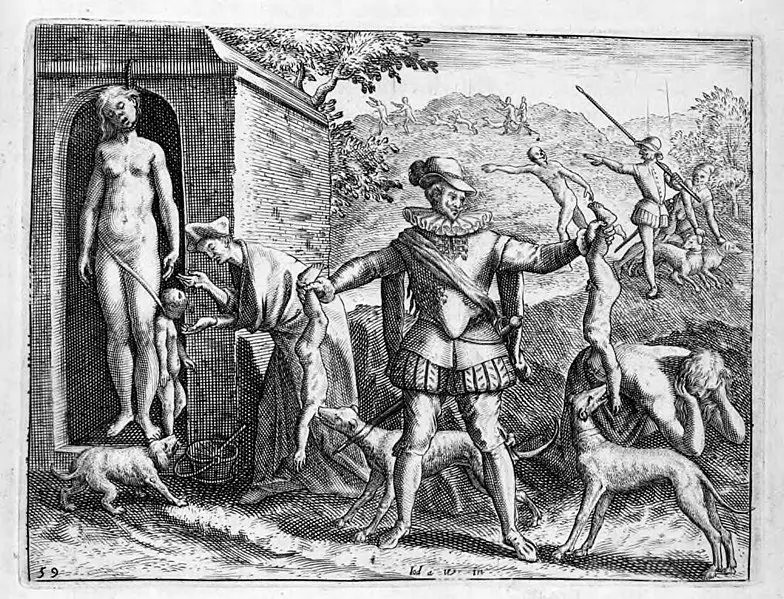
"Typical Spaniard" in an engraving by the Calvinist artist Theodore de Bry, 1598. The explanation for this drawing reads: “The Spaniards kill women and children and feed their remains to dogs.”
However, one must understand that such views on Spain and the history of this country began to take shape in the 16th century in Protestant countries hostile to Spain. In the 20th century, this system of false propaganda ideas was called “Black Spanish legend" The times were harsh, the rule of the Catholic kings was harsh, but in other European countries - France, England or the German principalities - the level of atrocity was at least no less than in Spain under Isabella and Ferdinand. The same Jews were expelled from France in 1080, 1147, 1306, 1394 and 1591, from England in 1188, 1198, 1290 and 1510, from Hungary in 1360, from Poland in 1407. Religious wars shook France from 1562 to 1598, they reached their highest point on the night of August 24, 1572 (the eve of St. Bartholomew's Day), but the killings of Protestants in various cities then continued for about six weeks, up to 30 thousand people were killed, 200 thousand fled the country. And it was precisely at this time that the “Spanish Black Legend” began to take shape in the Netherlands and England. But we will talk about the Spanish Inquisition in another article. Let’s just say for now that in those days, Spain, already divided into separate kingdoms, was also torn to pieces by local feudal lords. Jews and Moors (Mudejars) who did not want to be baptized lived in separate communities with their own laws, often not paying attention to the decrees of the authorities. Yes, and baptized Marrano Jews and Morisco Muslims too. The same Jews participated in the financial operations of the state and in its management with pleasure and great benefit for themselves, but in every possible way resisted the interference of royal officials in the affairs of their communities. Isabella and Ferdinand had to be tough and cruel rulers. Already in the second half of the XNUMXth century, under much calmer and more favorable conditions, Bismarck declared:
And further:
F. Tyutchev responded to this in 1870:
It may be soldered with iron and blood only ... "
Isabella and Ferdinand were in a much more difficult situation. The Jew Hernando del Pulgar, Isabella's secretary, who converted to Christianity but fell into disgrace for criticizing the Inquisition, writes in the Chronicle of Catholic Kings:
And the chronicler Sebastian de Olmedo, a contemporary of Isabella, gives the following description of her confessor, mentor and educator, Torquemada:
Many researchers believe that Queen Isabella I of Castile la Catolica had a decisive influence on the functions of the chess queen. As is known, Europeans learned about chess from the Arabs. The figure standing next to the king and called “advisor” (mantri) in India, “commander” (farzin) in Persia, “vizier” (wazir) in Arab countries, was almost the weakest, since it had the right to walk only one square diagonally. However, in Europe, many decided that farzin was a woman. Some believe that the king's wife or favorite (lady of the heart) was immediately meant, but others believe that the queen was originally associated with the Virgin Mary, whose cult was widespread in Catholic countries and especially among the Crusaders. In Spain and Italy, the queen began to be called by the same word as the Mother of God - “Dama” and “Donna”, respectively. In some other countries - “Vierge” (this is the Latin word for “Virgo”). And still in many countries the queen is called “Lady” - no longer associating her with the Virgin Mary. In other states, this figure is directly called the queen (unofficially - in Russia), using different words - queen, reine, regina, vasilissa, queen, kralitsa, etc. Russia, Belarus, Ukraine, Azerbaijan, Hungary, Poland and Turkey chose The male version of the name of this figure is queen, hetman, vizier. The Estonians “distinguished themselves” by calling the queen a “flag.”
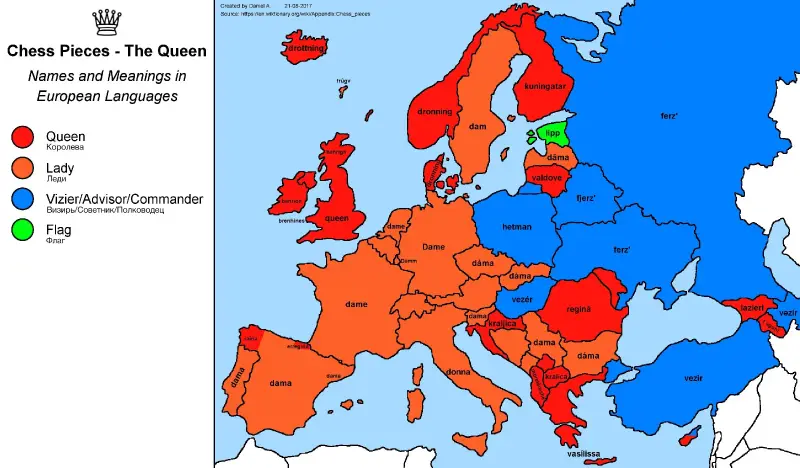
This map of the distribution of various variants of the name of this chess piece can be found on the Internet
But we are interested in the “female hypostasis” of the queen. It is believed that two real queens were assigned in turn to this chess piece. The first of them is the famous Alienor (1124-1204), Duchess of Aquitaine, Queen of France, England, and also of all knights and troubadours. Mother of Richard the Lionheart and John (John) Lackland.
Eleanor of Aquitaine and her first husband Louis VII. Miniature from the Chronicles of Saint-Denis, XIII century:
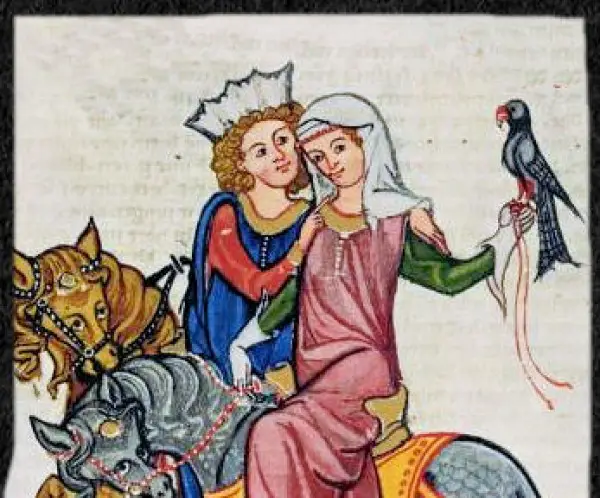
And this is her with her second husband, Henry II Plantagenet. Fresco of the chapel of Saint Radegonde, Chinon:
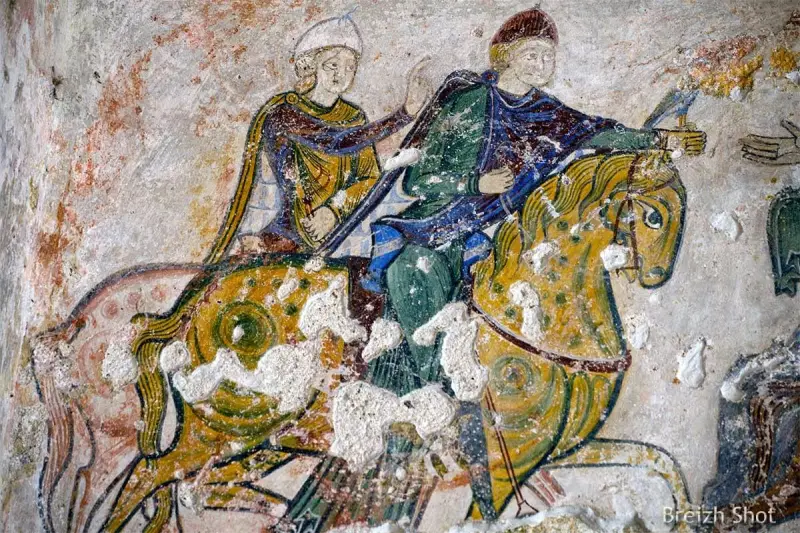
Alienora became a participant in the Second Crusade. Her first husband, the French king Louis VII, was forced to agree, because the knights of Aquitaine were ready to go to Palestine only with their beloved duchess. And a contemporary of those events, the Byzantine chronicler Niketas Choniates, wrote with surprise about the army of the French crusaders:
And one of the European chronicles says:
The second woman who influenced the formation of the image of the queen figure was the fanatical Catholic Isabella of Castile (1474-1504), the heroine of our article, who was completely different from Alienora (“the queen of courtly love”). She also took part in military campaigns, and took her children with her, because she believed that she should personally be involved in their upbringing (especially religious).
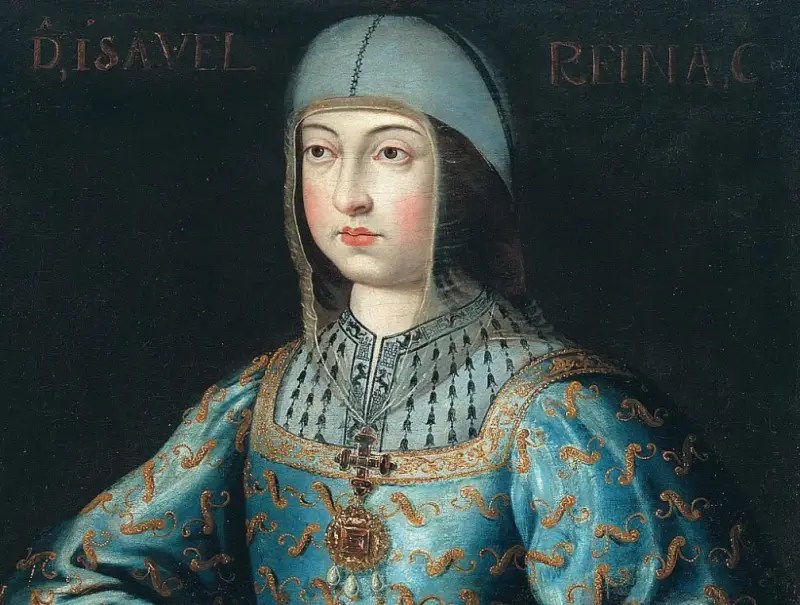
Isabella I of Castile in a portrait by an unknown artist
They say that it was in Spain and precisely during the reign of Isabella the Catholic that the queen, identified with the queen, became the most powerful piece of the chessboard, gaining the right to move to an unlimited number of squares and in any direction. And the game of chess at that time began to symbolize the struggle of Christian states with the Saracens.
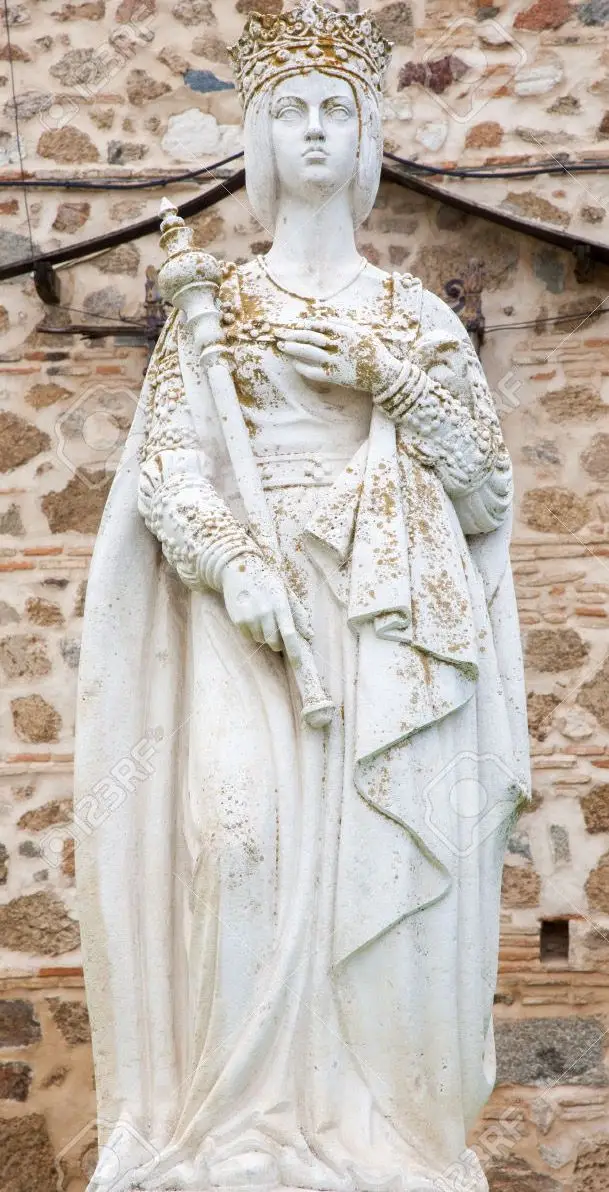
To many, this statue of Isabella I in Toledo seems like a white queen chess piece
Infanta Isabella
The heroine of the article was born on April 22, 1451 in the Castilian monastery of the Blessed Virgin Mary. Her father was King Juan II of Castile and Leon, her mother was the second wife of this monarch, Isabella, granddaughter of King Juan I of Portugal.
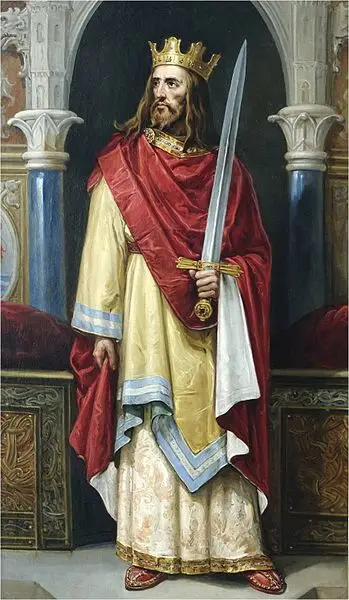
Jose Maria Rodriguez de Losada. Juan II de Castilla
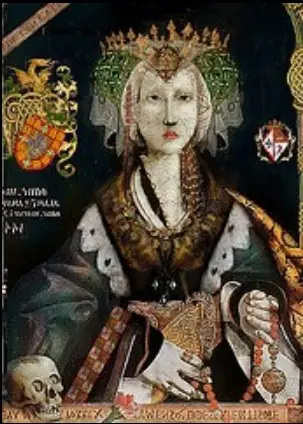
Isabella of Portugal in a portrait by an unknown artist
At the time of the wedding, Juan was 42 years old, the Portuguese princess was 19. The main reason for this marriage, concluded in 1447, is said to be the lack of children of the king’s only son, Enrique (son of Maria of Aragon), who by that time had been married for 7 years. This prince, and then King Enrique IV, even received the nickname el Impotente - “The Powerless One”.
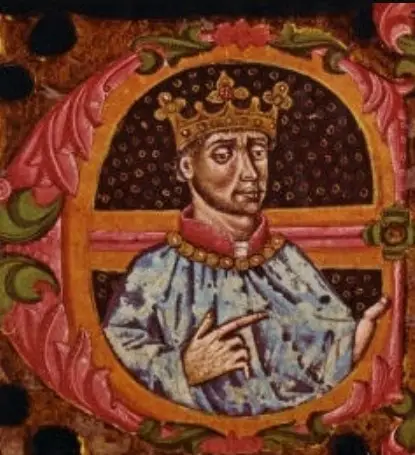
Enrique IV el Impotente
And the husband of the mother of the heroine of the article, although he did not suffer from sexual impotence, was a very weak-willed person, and the country was actually ruled by the Constable of Castile and the Grand Master of the Order of the Sword of St. Iago of Campostela Alvaro de Luna, who, by the way, chose a new wife for his monarch. Isabella of Portugal did not appreciate his efforts and in 1453 convinced her husband to arrest and then execute the “benefactor.”
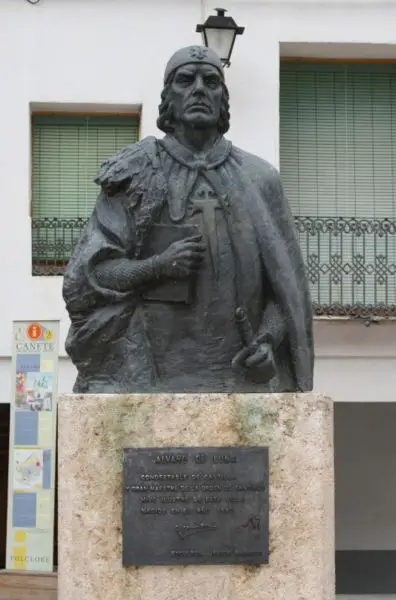
Statue of Alvaro de Luna in Conquence
In 1451, the new queen gave birth to a daughter, who was also named Isabella. The birth was very difficult, after which signs of mental illness appeared and began to rapidly progress: attacks of hysteria alternated with periods of severe depression. In 1453 she gave birth to a son, Alfonso, and a year later her husband died. The above-mentioned Enrique IV the Powerless ascended the throne, who sent the young stepmother and her children to Arevalo Castle. Here her mental state completely deteriorated, and at times she did not recognize her own children.
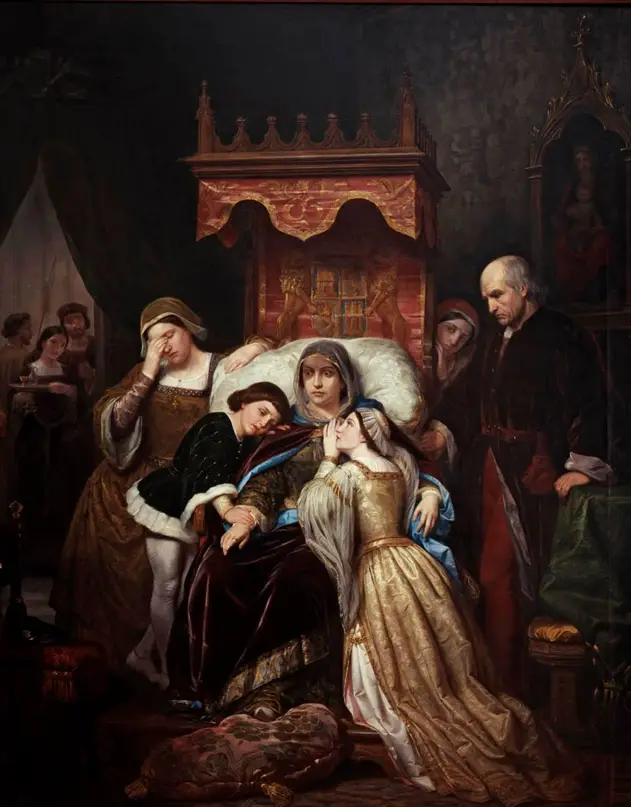
Pelegrin Clavet. “The Madness of Isabella of Portugal”: the queen does not recognize her children hugging her - Isabella and Alfonso
Let us note, by the way, that the second daughter of Isabella I the Catholic, Queen of Castile and wife of Philip the Fair, went down in history under the name Juana the Mad.
The widow queen and her three-year-old daughter regularly made pilgrimages to the Monastery of the Holy Cross (in the city of Segovia), where they met its abbot, Tommaso Torquemada. Soon he began to visit them - for this he had to walk and barefoot about 30 miles. Who then was this man, whose name in all countries became synonymous with the “Grand Inquisitor”?
Tommaso de Torquemada
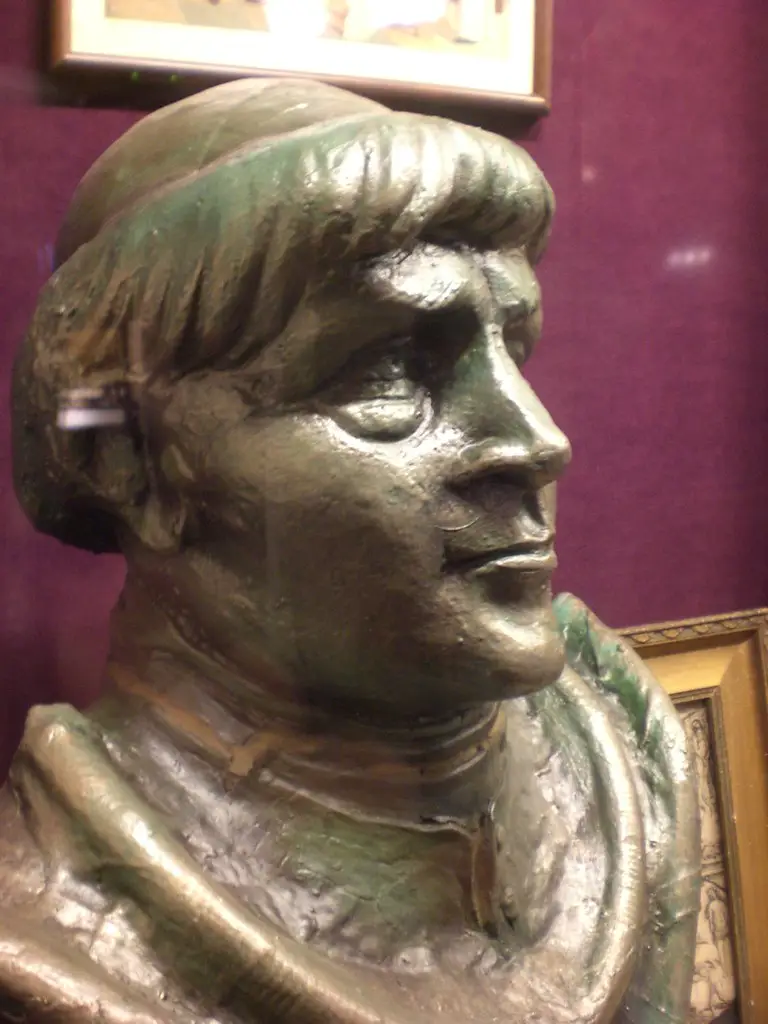
Tommaso de torquemada
You may be surprised, but the man who organized large-scale persecution of Jews and Moors was a descendant of baptized Jews. However, at the same time, 4 Castilian bishops came from the families of “conversos” (“converts”). Among the descendants of the Castilian "conversos" we can also mention the chancellor Luis de Santanel, the chief treasurer Gabriel Sanchez, Isabella's valet Juan Cabrero and the above-mentioned Fernando del Pulgara. And also Saint Teresa of Avila, classified as a Doctor of the Church, whose grandfather was imposed penance in 1485 (under the Grand Inquisitor Tommaso Torquemada) for secretly observing Jewish rites.
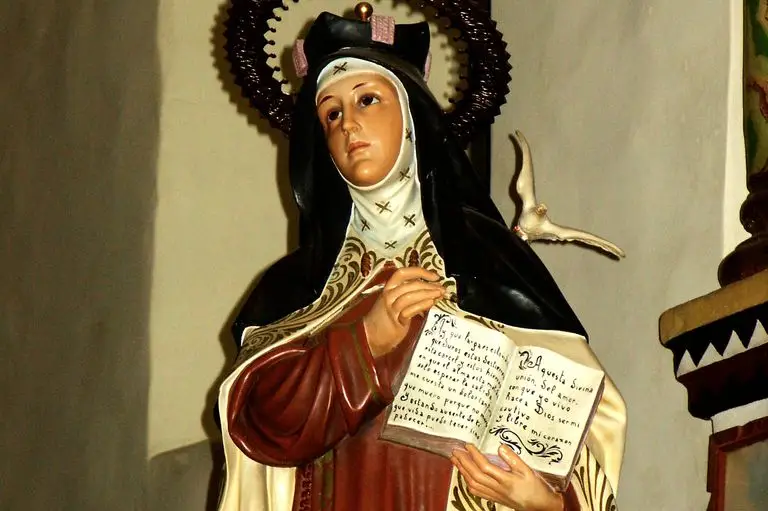
Statue of St. Theresa of Avila, San Juan Capistrano Monastery, California
In Aragon, during the reign of the Catholic kings, the descendants of the “new Christians” were the chief secretary of the high court, Felipe de Clemente, the royal secretary, Luis Gonzalez, the chief treasurer, Gabriel Sanchez, and the vice-chancellor, Don Alfonso de la Cavaleria.
Tommaso Torquemada was born on October 14, 1420 into a very pious family and was the nephew of Cardinal Juan de Torquemada, and his father took part in the Council of Constance, at which Jan Hus was convicted and sentenced to be burned at the stake. Until the age of 12, Tommaso was educated at home, and then at a monastery school. Already at the age of 14, he found himself in the Dominican monastery of St. Paul in the city of Valladolid, where he became an assistant cook. Young Tommaso traveled a lot around Castile, walking barefoot, wearing a hair shirt, not eating meat, and sleeping on bare boards. Only in 1451 (at the age of 31) did he become a full member of the Order of Friars Preachers (this is the official name of the Dominican monastic Order). A year later we see him as abbot of the Dominican monastery of the Holy Cross (Convento de Santa Cruz la Real) in Segovia, which at that time was one of the most important cities in Castile and even its former capital.
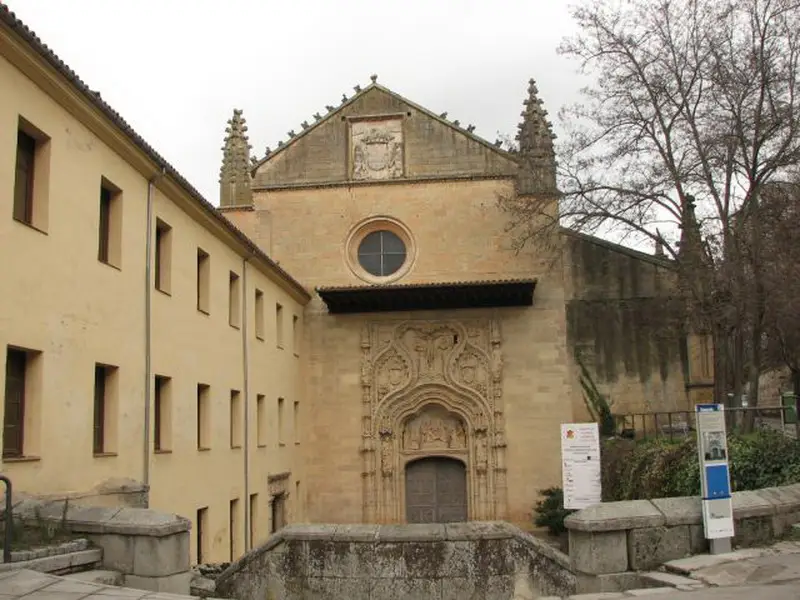
Monastery of Santa Cruz la Real, Segovia. The monastery building was rebuilt in the Plateresque style in the 1474th century. Until XNUMX its abbot was Tommaso de Torquemada
Here is the grotto in which Christ and Saint Dominic appeared to Teresa of Avila on September 30, 1574, promising help in reforming the Carmelite Order and creating its branch, the Discalced Carmelites. The building now belongs to the university.
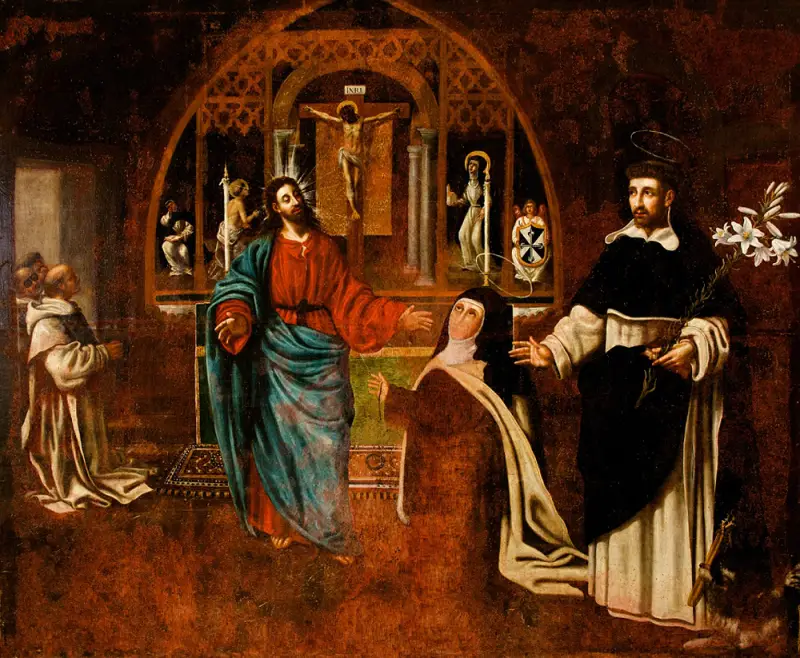
Ecstasy of St. Theresa in the cave of St. Dominic. Painting by an unknown artist of the XNUMXth century
Segovia has a very favorable geographical position - between Madrid and Valladolid, a little to the side is the small town of Arevalo, where, as we remember, the widowed Queen Isabella of Portugal and her children - the heroine of the article and her younger brother Alfonso - were in secret exile.
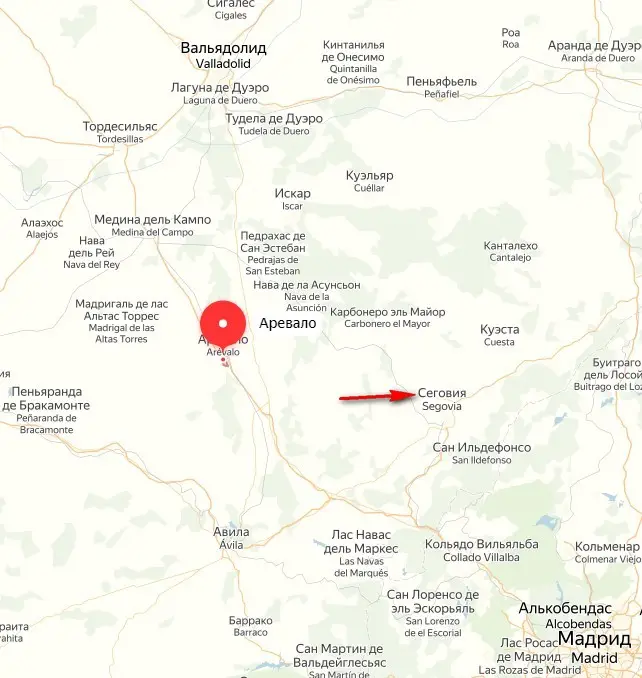
Infanta Isabella was only three years old when she met Torquemada, and the Dominican became Isabella’s confessor, her educator and teacher. Later it turned out that Isabella was much more educated than her husband, Ferdinand of Aragon. Raised in a monastery, Isabella became the patroness of artists and poets; during her reign, the first collections of ballads and the first popular prints were published - for the illiterate.
About Torquemada's influence on Isabella, Bishop Valentin Fléchier wrote in 1693:
And here is what the French Dominican Antoine Touron (1686–1775) wrote in “History of Famous People of the Dominican Order”:
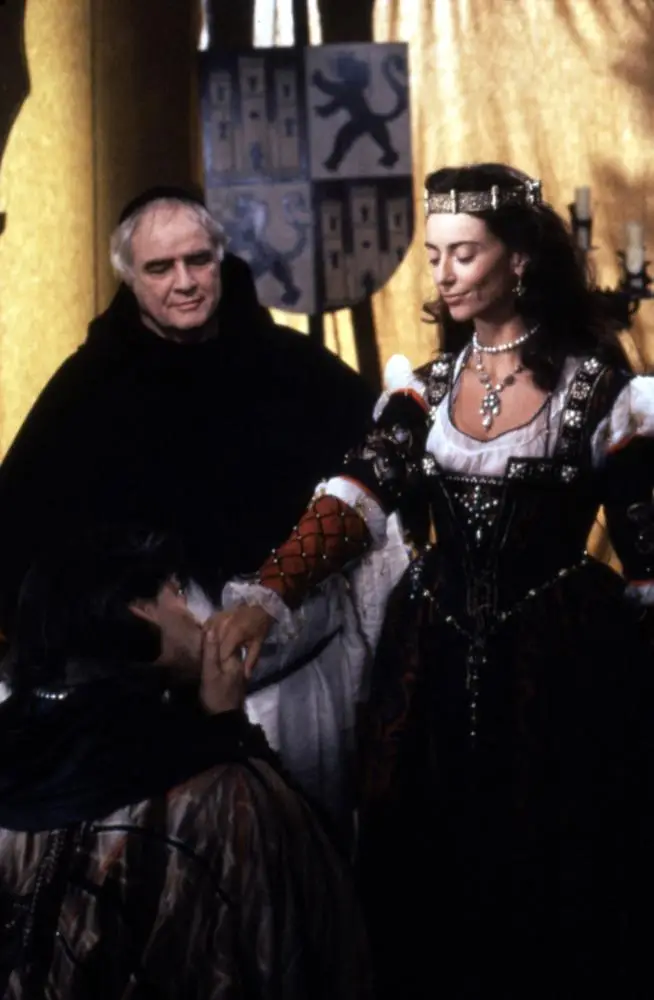
Marlon Brando as Torquemada and Rachel Ward as Isabella, the film Christopher Columbus. Conquest of America
The strength of Torquemada’s personality was such that Isabella’s husband, Ferdinand of Aragon, later came under his influence.
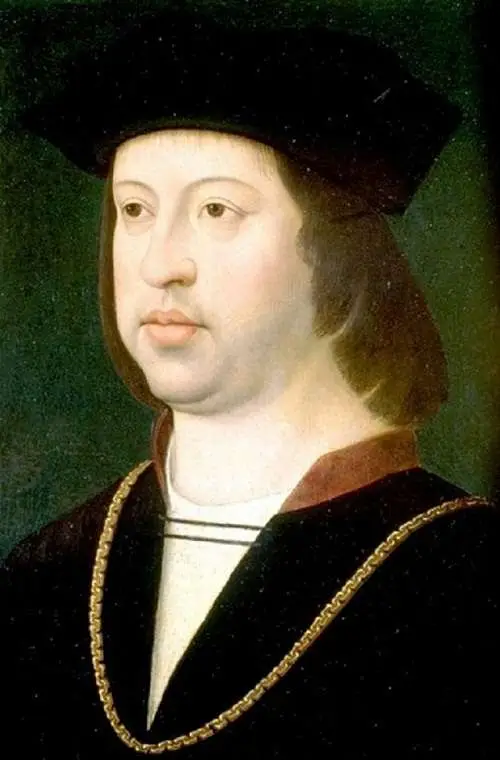
Ferdinand of Aragon, portrait by the Master of the Magdalene legend
In the next article we will continue the story about the Catholic Queen. Let's talk about how Infanta Isabella, against the will of the king, was given by Torquemada in marriage to the Aragonese prince Ferdinand. How she became Queen of Castile and Leon, and then Queen of Aragon, Valencia and Sicily, as well as Countess of Barcelona. About the family life of Queen Isabella I and her children.
Information